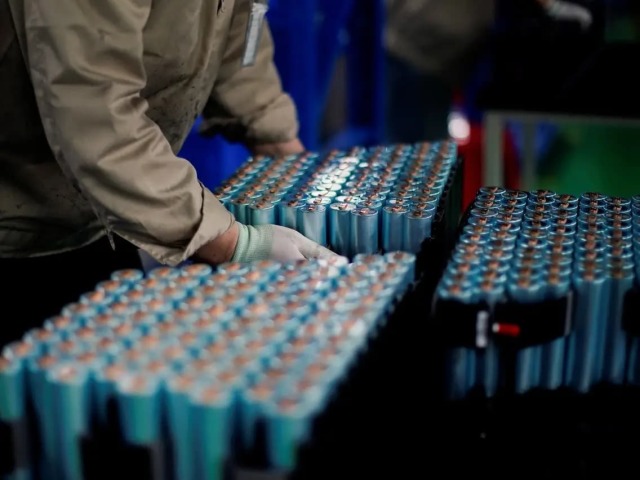Plunging into the details of Rosatom's project to create a lithium battery factory near Kaliningrad, Naked Science discovered a full-fledged detective story. There is also the receipt of grants from the US government, and annoying bankruptcies, and cunning takeovers of firms by each other. We are talking about the impressive path of electric vehicle technologies to Russia.
In May, Kommersant published news according to which the budget for the construction and launch of a lithium-ion battery plant in the Kaliningrad Region will amount to over 26 billion rubles. In three years, Rosatom, together with an unnamed shareholder, will invest a little more than a couple billion rubles each, five more will be attracted from the regional budget, the rest will be loan funds. The launch of the site should take place in 2025, the initial installed capacity will be four gigawatt-hours of the total capacity of the produced battery cells per year. In the future, it can be increased almost fourfold.
Batteries for passenger cars and commercial electric vehicles will be produced. They want to sell them both to the domestic market and for export. The plans for the plant's shipments look somewhat overstated, but the most interesting thing in this story is not them, but where do modern technologies for the production of lithium batteries come from in Russia?
The world's leading automakers are literally fighting for the creators of competitive cells, and if domestic companies were among them, they would not be able to remain unnoticed. As it turned out, straw was put under this project at the beginning of this century.
Electric cars in Kaliningrad
To begin with, let's ask ourselves: how relevant is the production of electric vehicles in Russia, especially in its westernmost region? Firstly, there is not much time left before the actual ban of cars with internal combustion engines in the European Union — ten, well, fifteen years. Even if by this time the admission of gasoline and diesel cars to European roads is not finally withdrawn, the restrictions promise to be very serious, almost critical.
In this scenario, the only economically viable land-based way of communication between the Kaliningrad region and the rest of the country will be the railway. Despite all the advantages, she can only envy the flexibility of road transport. And routes to other EU states should not be written off.
In the light of such gloomy prospects, the presence of at least some kind of own production of electric vehicles looks like a vital necessity. Moreover, Western sanctions may not be lifted during this time (or even added), so it will be difficult for Kaliningrad logisticians to buy imported green transport en masse.
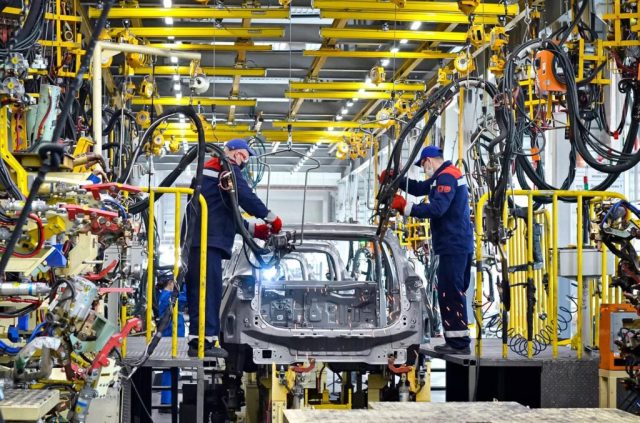
The Avtotor conveyor. Since 1996, BMW, KIA, Hyundai, Hyundai, Ford, Chery, as well as some brands of the General Motors concern have been assembled at the plant in different periods
Image source: "Avtotor"
Secondly, this Russian exclave is surrounded on all sides by countries that already have a fairly advanced infrastructure for electric vehicles. Therefore, there is no need to go far for examples of both successful and not-so-good solutions. And it is easier to develop electric transport in one region, physically separated from the rest, than to produce regions of the same country that are different in terms of "friendliness" to eco-friendly cars.
Based on the above-described prerequisites, the Kaliningrad region has become the optimal candidate for the creation of the first real production of electric vehicles and components for them. Admittedly, against the general news background of the domestic automotive industry, it was difficult to notice. Especially after the Kama-1 project of the SPbPU engineering center and the Naberezhnye Chelny plant, which has made a lot of noise, which has so far ended in nothing.
Both the former and the current leadership of Kaliningrad Avtotor have repeatedly stuttered about the production of hydrogen or electric cars at their facilities. Among the constraining factors, both common reasons for this topic in Russia and rather interesting internal observations were mentioned. The first include the lack of developed infrastructure for electric vehicles and, consequently, low demand for them. To consider why this argument should be recognized as meaningless, another full-fledged article will be required. But briefly the question was touched upon in the article Naked Science about the test drive of an electric car in the province.
A really serious limitation for the mass production of domestic green cars is something else. Russian companies more html" target="_blank" rel="nofollow">we have not learned how to produce lithium batteries with current characteristics (the current energy density is too low). Components and raw materials for them are already yes, but it is still more profitable to import cells directly. And this is banal expensive, electric cars will not be affordable for most compatriots. This is where Rosatom comes into play with its clever solution.
Gigafactory, which in fact is not "giga" at all
It may seem that the 26 billion rubles mentioned above is an impressive amount. However, by the standards of the lithium battery industry, these are mere pennies. Competitive factories producing batteries cost billions of dollars, and their capacity is estimated at tens of gigawatt-hours per year. The Kaliningrad production site is unlikely to be able to compare with them even in the future. However, the Rosatom plant is being built as "mundane" as possible and tailored to the needs of the domestic market. This is noticeable in many small things.
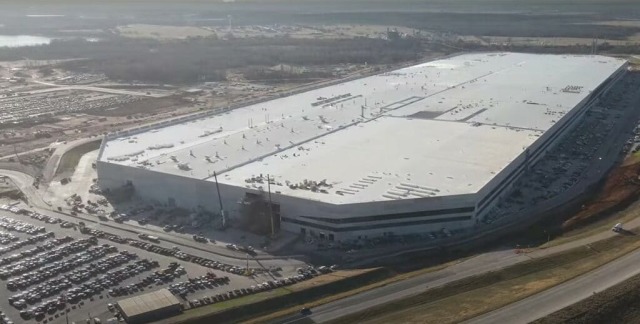
Gigafactories are colossal industrial complexes for the production of electronics, microchips and, with the filing of Tesla, electric car factories, as well as battery cells. In the photo — Tesla Gigafactory Texas
Image Source: Tesla Pro News
For example, the territory of the frozen Baltic nuclear power plant was chosen as the site for the plant, that is, part of the required infrastructure is already there. And the nearby Avtotor will be able to accept all the released cells if it is not possible to find demand for them abroad or from other domestic car factories. Four gigawatt-hours of capacity is about 45-65 thousand electric vehicles, which is three times lower than the annual production of cars at the Kaliningrad plant. That is, under the "electric trains" you will not even have to re-equip all the conveyors of the enterprise.
The news with the designation of the cost of the "Russian gigafactory" indicates that work on the project is underway despite serious changes in the geopolitical situation. Earlier, on March 17, the plant " received the green light " in the format of a trilateral agreement on cooperation in the development of environmentally friendly transport.
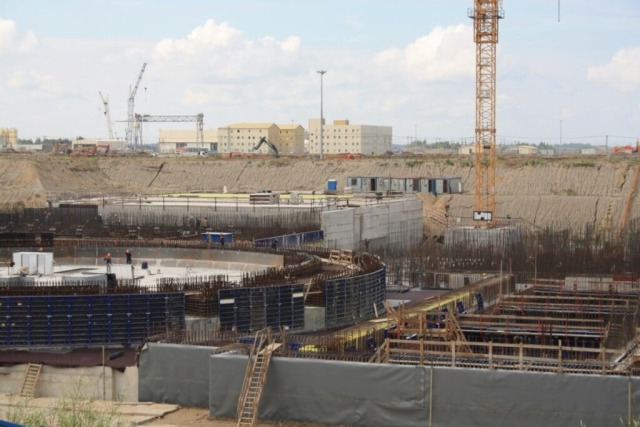
The site of the Baltic NPP in 2013 (approximate dating)
Image source: Rosatom
The document was signed " Rosatom, Avtotor Holding, the Russian Ministry of Industry and Trade (Minpromtorg), as well as the administration of the Kaliningrad Region. Officials promised assistance in the development of charging and refueling infrastructure for green cars (electric or hydrogen cars). The roles of "Autor" and " Reners " (a subsidiary of Rosatom, which specializes in energy storage systems) are understandable.
Where does the technology come from
Here we come to the most important question: with the use of what developments will the "Russian gigafactory" be implemented? This story began back in 2001, when a Russian businessman Boris Gennadievich Zingarevich (member of the Board of Directors of the Ilim pulp and paper group) acquired a controlling stake in the American company Ener1 . First of all, he "shook up" management and optimized internal processes. The effect was not long in coming: the company emerged from the crisis and began to function normally.
Seven years later Ener1 acquired the South Korean company Enertech for a little over 55 million dollars. In total, for about 7% of the cost of the Kaliningrad gigafactory that has not yet been built, Zingarevich's company received 83% of the shares and access to a number of very interesting technologies. The fact is that Enertech specialized not in "classic" cylindrical lithium cells, but in large—format prismatic cells - the same, only significantly smaller, are used in consumer electronics such as smartphones, laptops and tablets. They have their disadvantages, but the energy density is higher.
After another year Ener1 invested about $ 15.5 million in the Norwegian company Think Global (31% of shares). Speaking about the history of electric vehicles, it is often unfairly forgotten, although in fact it was Think Global that consistently created compact cheap urban electric vehicles since 1991. Prototype after prototype was tested and improved, until by 2009, Think City had acquired its final appearance. Interesting fact: as in the case of the Tesla Roadster, the British firm Lotus helped make the chassis of this car.
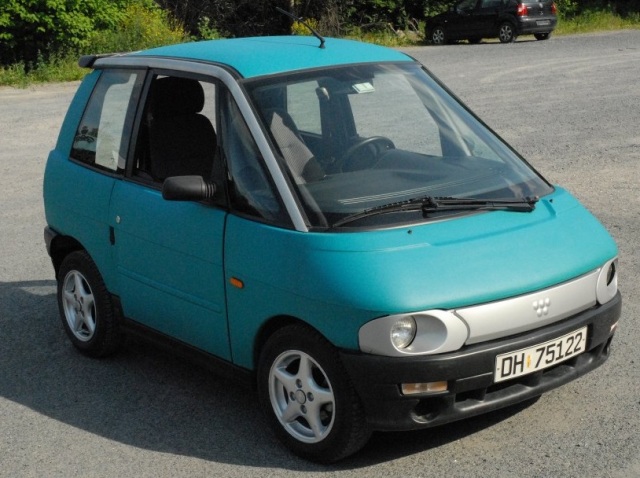
One of the first prototypes of electric cars Think Global — PIV3, aka City Bee, 1995
Image source: Wikimedia, Egil Kvaleberg
It is unlikely that you, the reader, have heard anything about this brand - for the simple reason that Think City "didn't take off." The car did not have a noticeable success with buyers: a small power reserve, long charging, high price. Well, the Europeans did not get their Elon Musk, who would have stuffed as many batteries into an electric car as he could fit — and a little more. Therefore, Think Global went bankrupt, dragging Ener1 to the bottom in 2011. The latter then put its affairs in order, was restructured again and, as far as can be judged, still exists.
In the interval between investments in electric vehicles and bankruptcy, Ener1 managed to win a government grant (in the USA) in the amount of $ 118.5 million. And, obviously, successfully spend it on "the development of transport technologies that will allow America to reduce dependence on foreign oil." That's the irony of fate.
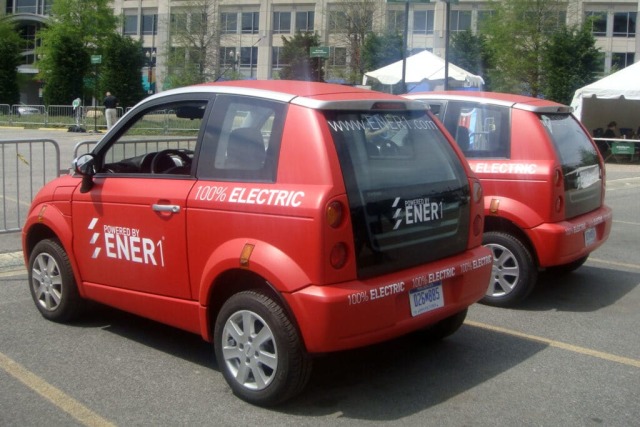
The eloquent phrase "Powered by Ener1" clearly shows whose battery technology was tested on Think City
Image source: Wikimedia, Mario Roberto Duran Ortiz
What conclusion can be drawn from all this? Even though Think City turned out to be a failure, many technologies were tested on this electric car. Since the status of a key shareholder implies not only the collection of dividends, useful knowledge has also been transferred to Ener1. And also to Enertech, which was not directly connected with this project.
But the composition of the top management of the South Korean company changed smoothly. By 2019, a significant part of the leadership positions, including the CEO, were occupied by people with Russian surnames. And at the end of 2019, 49% of Enertech International Inc. bought out "Rener" (see above). The one that has become a key technological partner in the project of the Kaliningrad factory for the production of lithium batteries for electric vehicles.
Instead of a conclusion
The whole story described is formed according to data from open sources; of course, it cannot be argued that this is a long-standing, deeply thought-out scheme of access to technology. Most likely, it just happened in the process of ordinary transitions from hand to hand of companies working at the forefront of progress. According to a number of indirect signs, we can safely say that both Ener1 and Enertech are not dummies, but firms that are really leading developments in the field of the most modern lithium battery cells.
Judging by the news section of the official Enertech website, the company is not going to join the sanctions against its Russian partners yet. But even if the cooperation stops, domestic businessmen had enough time to adopt both the most important modern technologies and valuable experience.
Whether it will be possible to use this wealth wisely is an open question. We can only hope that Russia will have its own production of electric vehicles, because they are the future of road transport.
